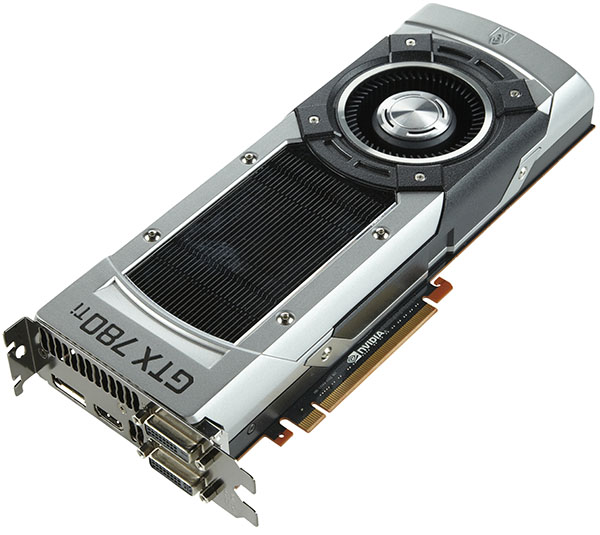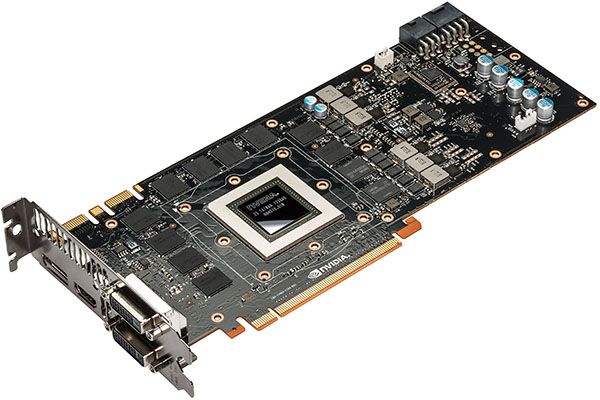Nvidia GeForce GTX 780 Ti Review: GK110, Fully Unlocked
Hot on the heels of AMD's Radeon R9 290X receiving acclaim for a fair price and high performance, Nvidia is launching its fastest single-GPU gaming card ever: GeForce GTX 780 Ti. It's quicker than 290X, but also more expensive. Is the premium worthwhile?
Unquestionably The Fastest Single-GPU Graphics Card
I’ve been spending so much time trying to figure out why my Radeon R9 290X cards perform differently that I almost didn’t get this story written. The investigation continues, and includes absolute fan speeds that correspond to dissimilar PWM control, along with sensitivities to ambient conditions. Regardless of why you might see two Hawaii-based boards delivering frame rates separated by double-digit percentages, the real point is that this behavior is designed into the Radeon R9 290X. AMD’s card is meant to range from 727 to 1000 MHz, depending on the environment. Given the reference cooler, specifically, and the Quiet firmware setting, which together can't quite keep up with Hawaii, you have to expect variance. It takes cranking up the fan speed or installing a third-party cooler to prevent severe performance pull-backs.
Nvidia seems happy capitalizing on this confusing state of affairs, and is positioning GeForce GTX 780 Ti as the fastest single-GPU board out there…consistently. The degree to which it wins depends on how AMD’s flagship is used. Sometimes the 780 Ti takes a single-digit-percent win; other times it’s 30%+ faster. Whether Nvidia’s advantage is worthwhile depends on what you’d see from your R9 290X.
Beyond its performance, GeForce GTX 780 Ti is more efficient than Titan thanks to tightly-binned GK110B GPUs that come fully-enabled, operate at higher frequencies, and yet are rated for the same 250 W TDP. As a result, this is a quiet card. It elegantly blows waste heat out of its I/O bracket. And the board looks good. We know that thermal solution isn’t cheap, but it’s the reason Nvidia keeps gathering praise for its design, while everyone looks forward to third-party board vendors replacing AMD’s reference effort.
GeForce GTX 780 Ti isn’t perfect. Priced at $700, it’s a bargain compared to Titan. But it’s not a bargain given the competition (after all, we already know what it takes to make R9 290X and 290 run faster). Nvidia does handicap the card’s FP64 performance for purposes of segmentation. However, AMD’s doing that now as well with its Hawaii-based boards. Perhaps the biggest issue enthusiasts will find with 780 Ti is memory capacity. Titan ships with 6 GB of GDDR5, while AMD includes 4 GB on its $550 Radeon R9 290X and $400 290. In today’s games, and at resolutions as high as 3840x2160, 780 Ti’s 3 GB should be sufficient. However, it’s already possible to punch above that in Battlefield 4 using three 2560x1440 monitors. When you’re sinking serious coin on ultra-high-end hardware, future-proofing is an important consideration.
When the dust settles, though, GeForce GTX 780 Ti does emerge as the fastest single-GPU graphics card you can buy for common enthusiast-class resolutions. It houses an incredibly complex processor and does a superb job keeping the chip cool, quietly. Living in Bakersfield, where it gets into the 100-degree range during summer, I particularly appreciate 780 Ti’s consistent performance. Though I’m not necessarily a fan of Nvidia’s price point, something tells me that the folks who are truly interested in buying a GeForce GTX 780 Ti know why they want it, and are more than happy to scrape $300 off of Titan for a better-performing gaming product.
Now, if you’ll excuse me, I need to figure out how to get GeForce GTX 780 Ti into my mini-ITX Tiki. The card may be a little rich for my budget, but the fact that it’ll fit—physically and electrically—is nothing short of amazing.
Get Tom's Hardware's best news and in-depth reviews, straight to your inbox.
Current page: Unquestionably The Fastest Single-GPU Graphics Card
Prev Page Noise And Video Comparison-
faster23rd My heart broke a little bit for AMD. Unless AMD's got something up their sleeve, it's up to the board manufacturers now to get the 290X in a better competitive stance than the 780 ti.Reply -
tomc100 At $700, AMD has nothing to worry about other than the minority of enthusiast who are willing to pay $200 more for the absolute fastest. Also, when games like Battlefield 4 uses mantle the performance gains will be eroded or wiped out.Reply -
expl0itfinder Keep up the competition. Performance per dollar is the name of the game, and the consumers are thriving in it right now.Reply -
alterecho I want to see cooler as efficient as the 780 ti, on the 290X, and the benchmarks be run again. Something tells me 290X will perform similar or greater than 780ti, in that situation.Reply -
ohim Price vs way too few more fps than the rival will say a lot no matter who gets the crown, but can`t wonder to imagine the look on the face of the guys who got Titans for only few months of "fps supremacy" at insane price tags :)Reply -
bjaminnyc 2x R9 290's for $100 more will destroy the 780Ti. I don't really see where this logically fits in a competitively priced environment. Nice card, silly price point.Reply -
Innocent_Bystander-1312890 "Hawaii-based boards delivering frame rates separated by double-digit percentages, the real point is that this behavior is designed into the Radeon R9 290X. "Reply
It could also come down to production variance between the chips. Seen in before in manufacturing and it's not pretty. Sounds like we're starting to hit the ceiling with these GPUs... Makes me wonder what architectural magic they'll come up with next.
IB -
bjaminnyc 2x R9 290's for $100 more will destroy the 780Ti. I don't really see where this logically fits in a competitively priced environment. Nice card, silly price point.Reply -
Deus Gladiorum I'm going to build a rig for a friend and was planning on getting him the R9 290, but after the R9 290 review I'm quite hesitant. How can we know how the retail version of that card performs? Any chance you guys could pick one up and test it out? Furthermore, how can we know Nvidia isn't pulling the same trick: i.e. giving a press card that performs way above the retail version?Reply


